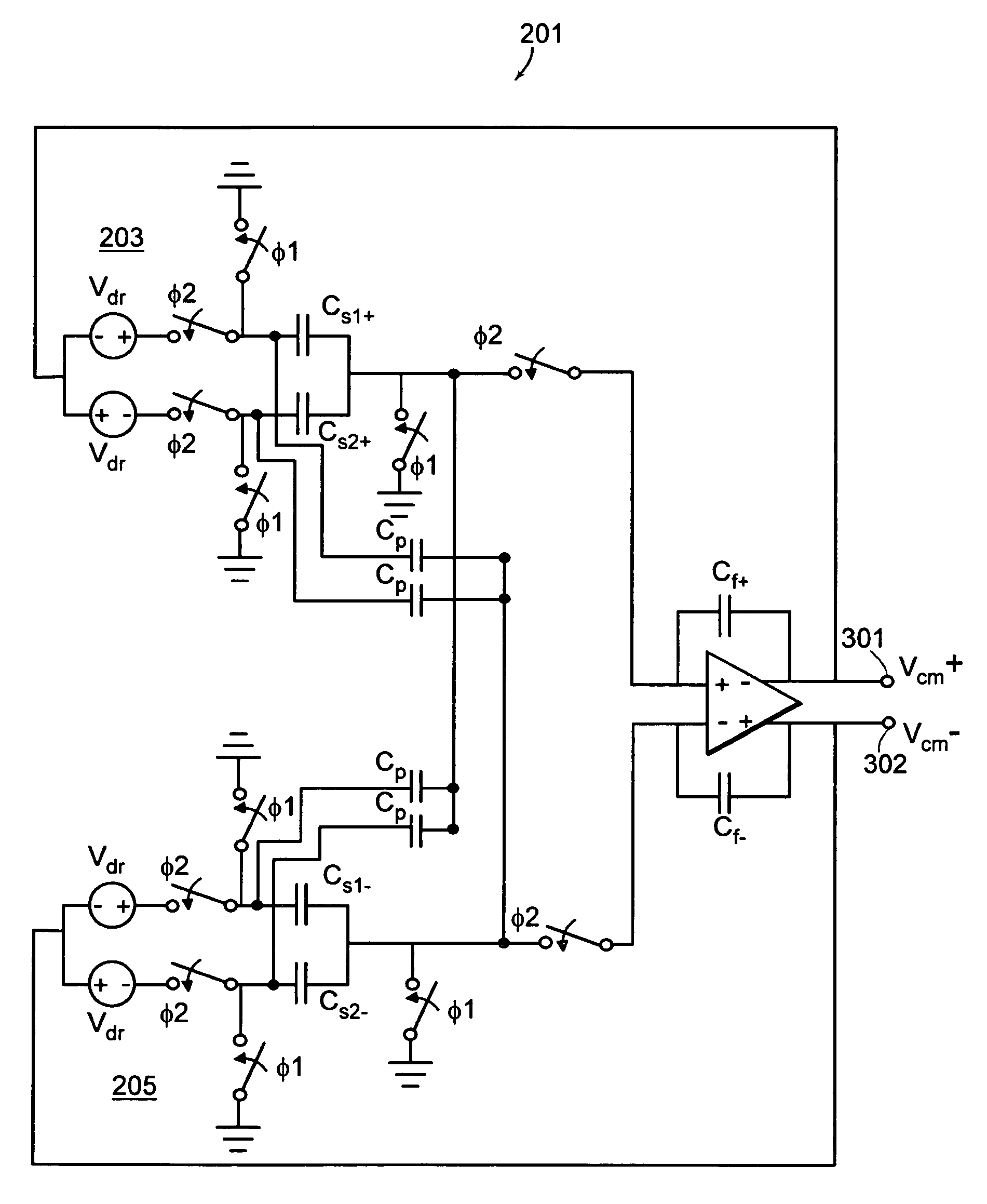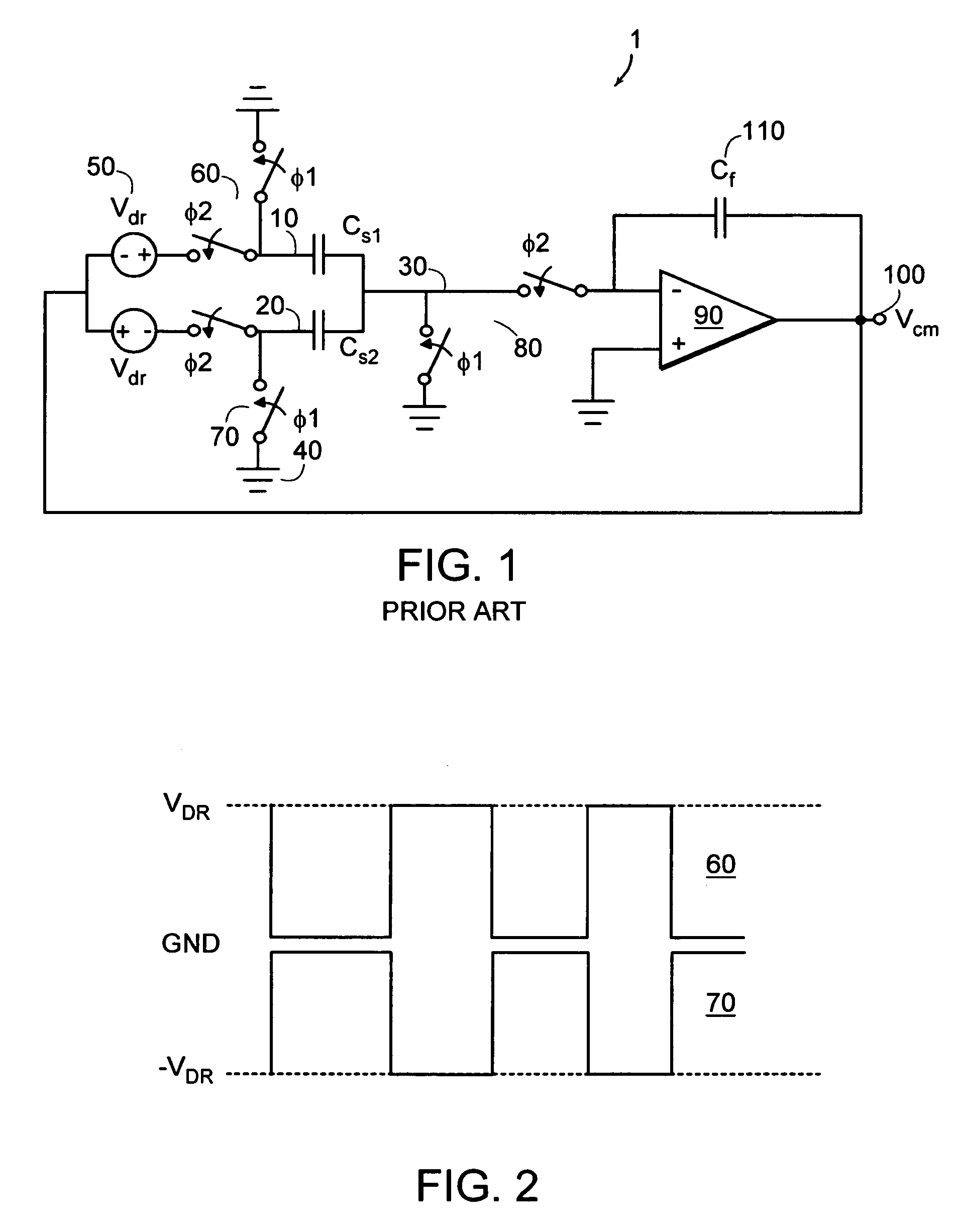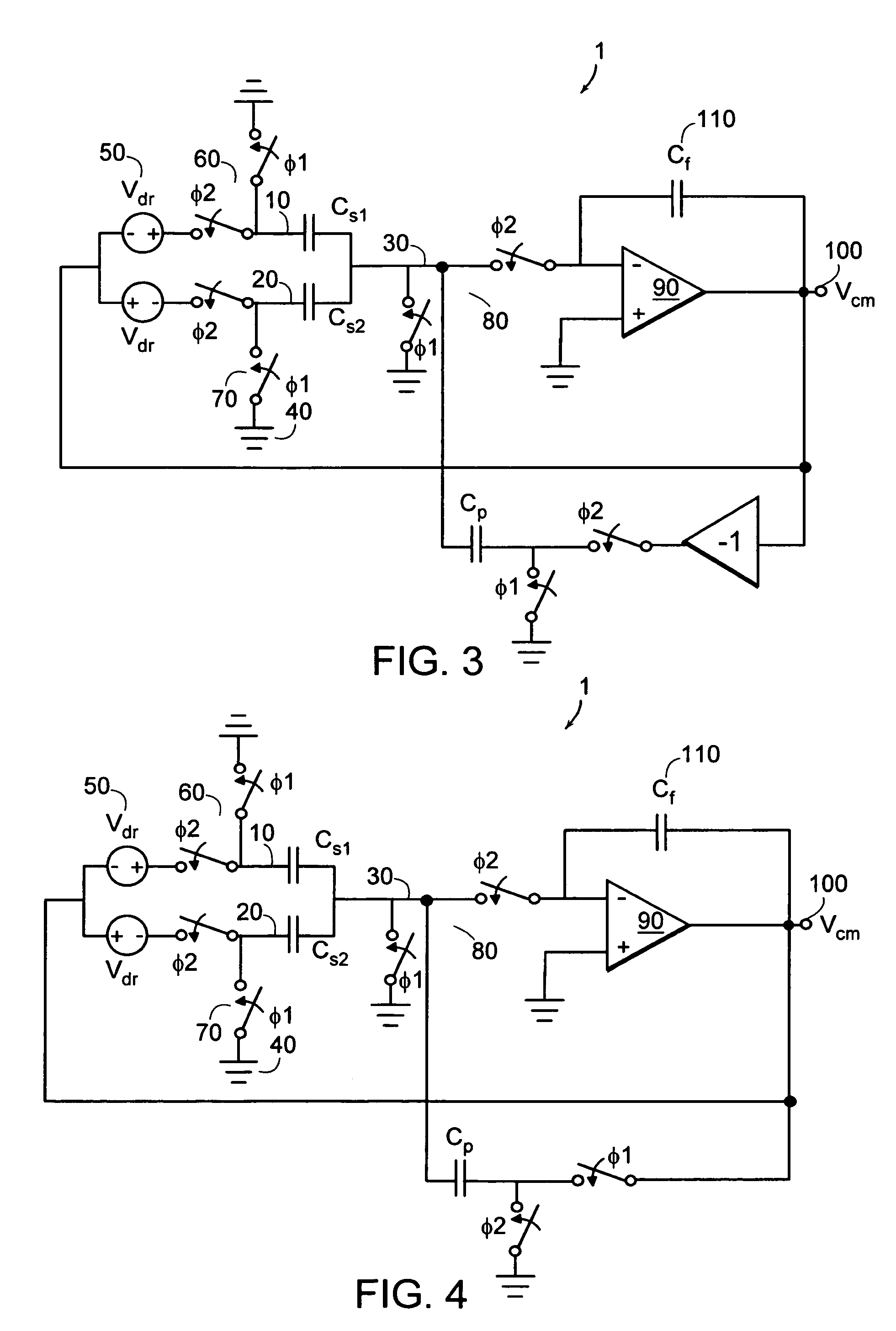Linearity enhancement for capacitive sensors
a capacitive sensor and linearity technology, applied in the direction of fluid pressure measurement, acceleration measurement using interia forces, instruments, etc., can solve the problem that the response may become non-linear for larger displacements, and achieve the effect of improving the output linearity of differential capacitive sensors and improving the linearity of differential sensors
- Summary
- Abstract
- Description
- Claims
- Application Information
AI Technical Summary
Benefits of technology
Problems solved by technology
Method used
Image
Examples
Embodiment Construction
[0016]Definitions. As used in this description and the accompanying claims, the following terms shall have the meanings indicated, unless the context otherwise requires:
[0017]The “linearity” of a sensor's output shall mean the root-mean-square deviation of the sensor's output from a straight line over an interval of interest. Linearity is “improved” when the linearity of the output of the sensor is reduced.
[0018]In various preferred embodiments of the present invention, a method of improving the output linearity of differential capacitive sensors is provided. The output of these differential sensors includes a component that is approximately linear in the displacement of a movable electrode with respect to a fixed electrode of the differential capacitor. The output of the sensor also includes a component that is not correlated to the movable electrode displacement plus higher order terms in the displacement. The method includes feeding back the sensor's output signal to the movable ...
PUM
| Property | Measurement | Unit |
|---|---|---|
| capacitance | aaaaa | aaaaa |
| phase | aaaaa | aaaaa |
| acceleration | aaaaa | aaaaa |
Abstract
Description
Claims
Application Information
 Login to View More
Login to View More - R&D
- Intellectual Property
- Life Sciences
- Materials
- Tech Scout
- Unparalleled Data Quality
- Higher Quality Content
- 60% Fewer Hallucinations
Browse by: Latest US Patents, China's latest patents, Technical Efficacy Thesaurus, Application Domain, Technology Topic, Popular Technical Reports.
© 2025 PatSnap. All rights reserved.Legal|Privacy policy|Modern Slavery Act Transparency Statement|Sitemap|About US| Contact US: help@patsnap.com



